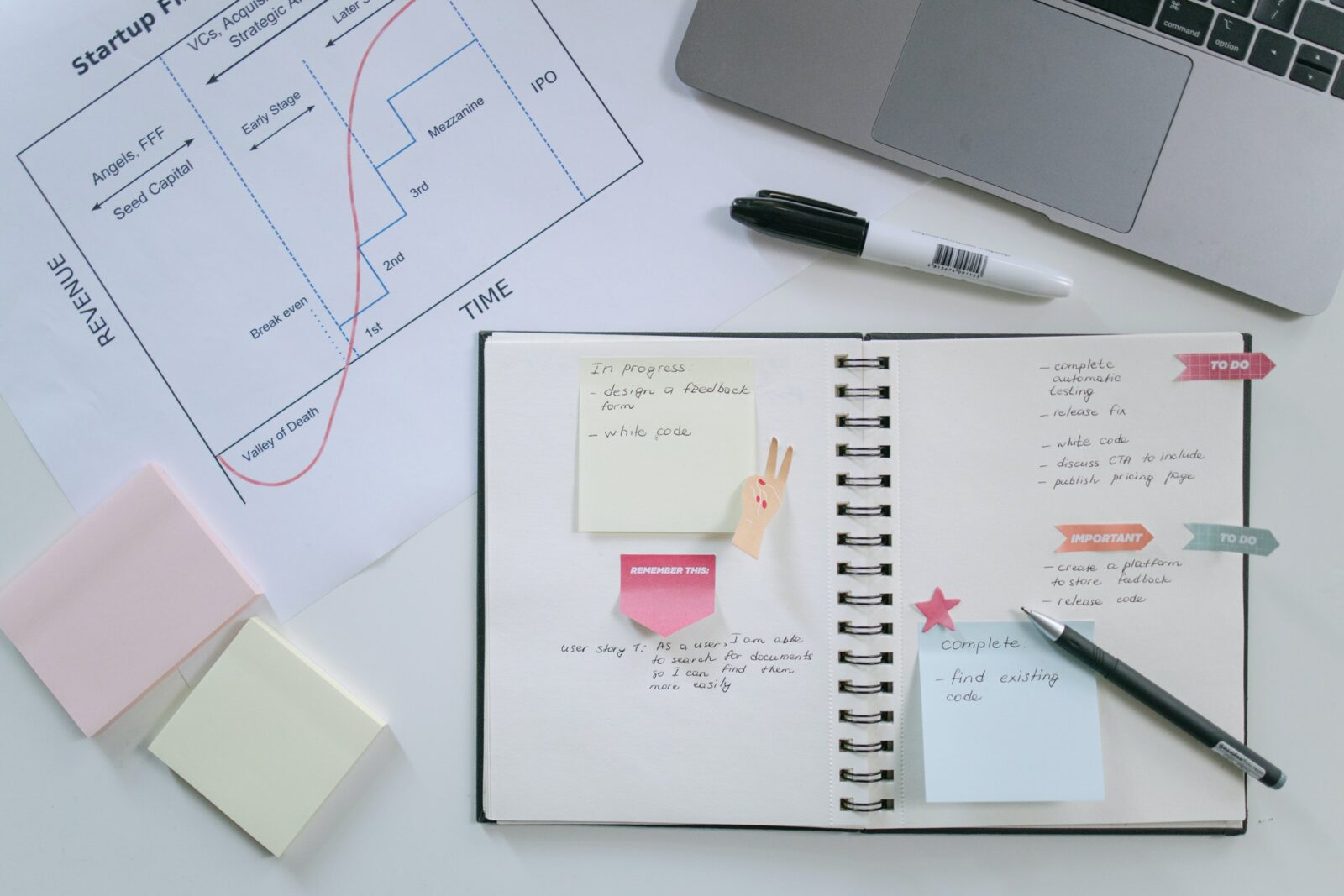

In order to design, you must have some kind of content to inform those design decisions (that is, if you hope for your work to be relevant!). Observations, surveys, interviews, and focus groups provide lots of raw insights, but until this data is coded (organized/categorized) it’s still just a big pile of data. After coding primary research, some themes should start to emerge. These themes inform what kind of intervention should be created and how to design it.
Themes
Themes come in lots of shapes and sizes. When you back away from your coding, themes emerge. Themes are the “this idea/fear/annoyance/pain/disconnection kept coming up when people responded to our methods.” They are the results of the research and the start of design.
Let’s look at a few possible themes that could come from different research topics:
- The buttons on this smartphone frustrated people.
- Customer service representatives didn’t have adequate language skills to accommodate all customers.
- The retro style of the poster was not clearly understood by the intended audience. People just thought the posters looked old and tired.
- People who signed up for the chocolate shake rewards program didn’t think the perks were terribly appealing.
Sub-Themes
As you’ve probably discovered, themes are dynamic—they don’t stop at a single statement like the ones above. For example, research on the shake rewards program could have produced a wide range of sub-themes:
- People who signed up for the chocolate shake rewards program didn’t think the perks were very special.
- They wished they could get vanilla shakes, too.
- The website for the program was prohibitively hard to use for managing rewards.
- When people went to the shake store, employees often complained that the reward program took a lot of time to sign up new members.
- The special cups used for the reward shakes were hard to reach because they were placed on a top shelf.
Megathemes
As your data coalesces into themes, you may find that some themes can be grouped. These are megathemes—groupings of themes that represent general discoveries. Let’s say we found these themes in our research:
- People complained that smartphone buttons were too small.
- Users complained that the physical switch was too small to operate.
- Some people lost their phone more than twice because it fell out of their pocket.
- Three people left their phone on a bus or plane because they did not see it—it blended in because it was small.
- Some people grabbed a deck of cards in the dark and thought it was their phone.
What’s the megatheme here? The phone dimensions were too small. All of these themes revealed that phones and their interfaces were frustrating because they had gotten too small. Hm! Maybe size matters!
Organizing Findings into Themes
“How on earth are we supposed to base any kind of conclusion on this heap of transcripts?” you may be asking. “All I have are images and words with codes applied to them.”
Qualitative methods produce words, pictures, and other bits of data you cannot count, so we need a way to bring these findings together into something conclusive so we know where the “problem” is and how we can start fixing it. We need to organize findings into themes. Here’s where a design research codebook comes into the picture.
A design research codebook brings all findings together into one place. Every theme, every unique idea, every discovery gets added to the codebook. After every idea is added—every unique coded statement—we begin to find themes that represent key ideas, needs, and opportunities for design.
I have provided a Design Research Codebook Starter Google Sheet to help you discover themes. The sheet is already pre-filled with a few examples. Use this file to record the codes that appear in your data. Let’s break the Design Research Codebook Starter Google Sheet into its parts.
- Code: the shortened code you created to represent the meaning of a statement
- Code Definition: a brief description of what the code represents
- Excerpt/example: a quote from the transcript that represents the code
- Participant #: the participant identifier (not the participant’s name)
- Theme Group: the theme this code fits within
Once you have defined themes, the next step is to design interventions that address these themes and solve the problems they represent. This conversion involves writing intervening questions followed by actionable statements.
Intervening Questions
Intervening questions open the design discussion. For instance, let’s continue with the reward program example:
- How could the shake program be more appealing to people who drink flavors other than chocolate
- How could the special cups for the program be more effectively stored and dispensed?
- In what ways, other than a website, could the program be operated?
Questions like these could go on for weeks, but they are always informed by collected data. The more detailed your data, the more you have to go on when generating intervening questions. Often, questions will require you to review your data again, from a different perspective. This part of the process is when you’ll be glad you took excruciatingly detailed field notes.
Generating intervening questions is a lot like doing thumbnails or writing short drafts… the more, the better. Don’t worry about making sure they are perfect, just make enough of them so you have lots to work with. You may find that creating a taxonomy of questions will reveal which ones are the strongest for moving forward.
Actionable Statements
The final step converting themes to directions for design is developing actionable statements. They are developed to define what actions need to be taken for designing. For instance:
- I will develop a way for people to redeem their rewards points without needing to remember a website.
- We will design a way for rewards cups to be dispensed easily.
- I will create a plan that enables people who prefer all shake flavors to participate in the rewards program.
- These statements should directly state the intent of the project. Once you have an actionable statement, you can begin to design.
Like Intervening Questions, write lots of possible actionable statements. Think through the intended and unintended consequences of each statement. These will eventually develop into a cloud of possible outcomes for design.
Stay On Track. Swerve if Necessary
While developing design outcomes, make sure you stay true to the themes, intervening questions, and actionable statements you generated. It helps to keep these statements visible while designing. Write them down somewhere as you develop sketches, concepts, and refinements. In the case of the shake rewards program, the following statements could be tacked up somewhere in the studio:
- People don’t think the chocolate shake rewards program is special.
- The website for the program is hard to use for managing rewards.
- In what ways, other than a website, could the program be operated?
- A way for people to use the program in ways that fit their lifestyle.
- Keeping these statements close while designing should impact the images you choose, what features are planned, and other aesthetic and functional components of the design.
But… a word of warning: Designing can influence your understanding of the “problem” you are addressing. Be aware that the problem and ideal outcomes may change as you design because your understanding of the problem and possible “solutions” will grow. If you need to “swerve” your design, then do so by returning to your themes to regroup.
Go Big
Visualize! Don’t forget, drawing, whiteboarding, or other means of making the topic tangible can often help clarify where to go/who to design for/how themes connect when designing an intervention.
Pro Tip
This process may work and look differently for different people. If you need to adapt it to your problem or the way you prefer to work, go for it! Give each step a chance, though. You may find that one of these steps was the key to unlocking an innovative design solution.